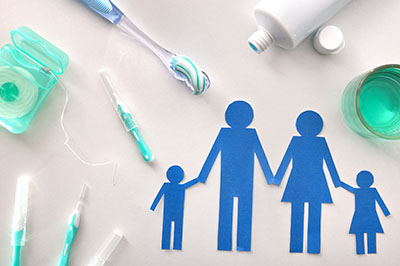Should You Buy Dental Insurance?
Last updated November 2023
If you don’t carry dental insurance coverage, you can buy it yourself. But because, like any insurance, the companies that offer dental coverage take in more money than they pay out, carefully evaluate available options before you buy.
Find out whether you already have coverage.
If you have kids, they could already have dental coverage. Most individual and small-group health insurance plans provide basic dental coverage for children under age 19.
Aside from “dental accident” coverage, health insurance plans usually don’t provide dental benefits to adults—but some do, so check. Some Medicare Advantage plans, for example, include basic dental coverage, and many “consumer-driven” and “high-deductible” health plans let you set aside money to spend on dental expenses.
 If you can get coverage for a reduced premium, it’s probably worth getting.
If you can get coverage for a reduced premium, it’s probably worth getting.
If your employer or your spouse’s employer offers you the option of buying dental coverage and pays a portion of the premiums, it’s likely worth getting. Not only will you get a discount on your premiums, but the effect of paying the premiums with pre-tax earnings provides a second discount roughly equal to your tax bracket. Unless the dental plan available to you is exorbitantly expensive, the reduced premiums should be easily offset by the savings.
Note that the dental plans offered by the state healthcare exchanges in the District, Maryland, and Virginia, and those offered by Federal Employees Health Benefits (FEHB) program do not include subsidized premiums.
If you have to pay for coverage on your own, determine whether it’s worth the price.
Unlike insurance policies you buy for your home, car, health, and life to guard against large and unpredictable expenses, you probably have some idea of what your dental expenses will be in the coming year, and it pays to plan when deciding whether to buy dental insurance.
Most standalone dental plans are a form of prepaid insurance that has the effect of spreading out your costs over the course of a year. To avoid oversight by state insurance regulators, many of these plans usually don’t even describe themselves as insurance, but rather as discount programs or clubs. Examples include Aetna Dental Access, Avia Dental Plan, Careington, CVS iSave, and UniCare Dental. For an annual premium these plans cover most or all of the costs of routine examinations and cleanings, and offer lower-than-average prices for more expensive treatments—as long as you use participating dentists. If you don’t, these types of plans will reimburse you, but for lower amounts than they reimburse for in-network dentists. In general, we find that even low-use families will save money (typically hundreds of dollars a year) with these types of plans, and high-use families will save a lot, especially if they use participating providers.
Keep in mind that provider networks for standalone dental plans are typically poor.
Be aware that the biggest problem most consumers have with many dental plans—and this is especially true of the prepaid/discount dental plans—is that few dentists participate as preferred providers. Some plans count fewer than 10 percent of dentists as preferred providers, and few of the top-rated dentists listed on Table 2 work with dental insurance plans. If you have dental insurance, you can usually use any dentist—but when you do so you’ll have to submit expenses to get reimbursed, and the reimbursement money will almost always be less than what you paid the dentist.
Before signing up for coverage, check whether your current dentist participates or compare the plan’s list of providers against top-rated dentists listed on our Ratings Tables. If a dentist you like doesn’t participate, that’s a reason not to join.
Don’t forget about your FSA.
You can use a flexible spending account (FSA) to pay for dental care. By setting aside pretax earnings, you effectively get a 20-40 percent discount on out-of-pocket medical costs.
Don’t use a pricey dentist.
The easiest way to save is to use a dentist who charges low fees. As the price comparison scores shown on our Ratings Tables indicate, some dentists charge fees that are 50 percent lower than their peers—and low-cost dentists are as likely to get top scores from their patients as high-cost dentists.


